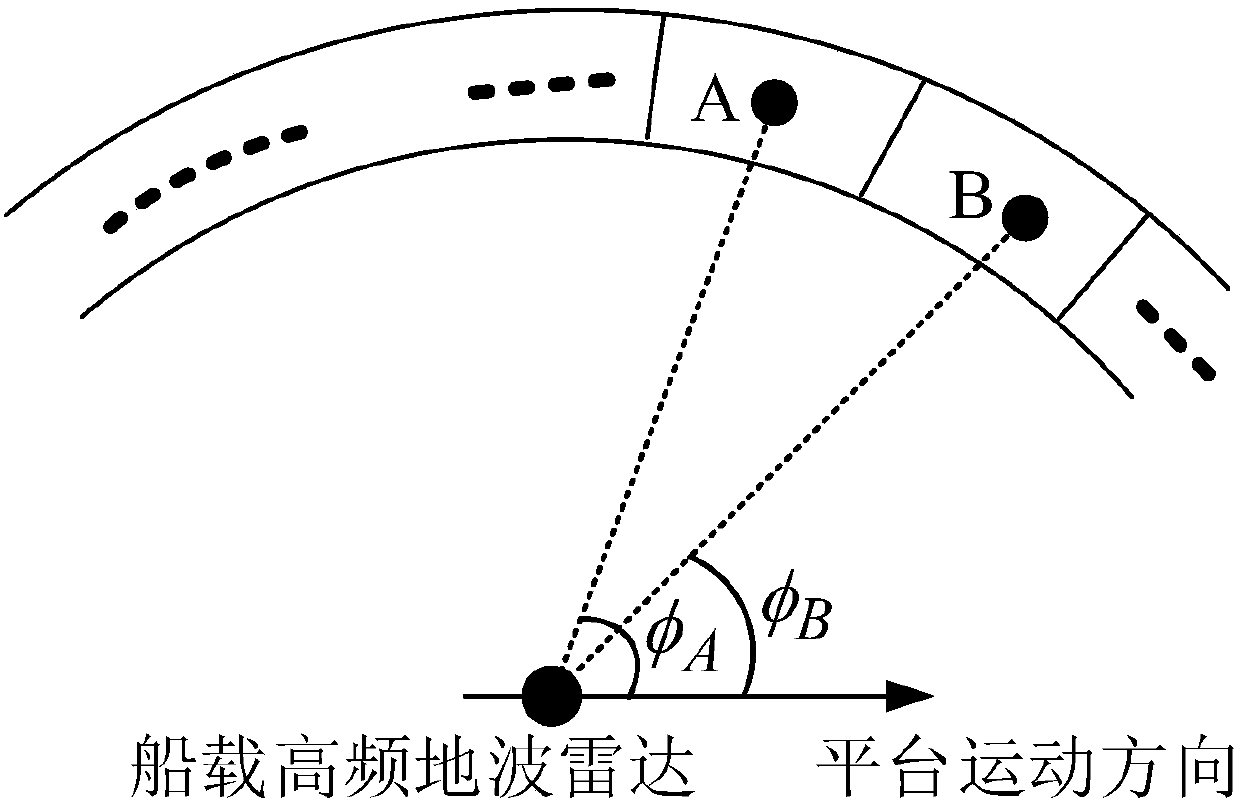Ocean surface wind field measurement method based on shipborne high frequency ground wave radar
A high-frequency ground wave radar and measurement method technology, applied in radio wave measurement systems, measurement devices, reflection/re-radiation of radio waves, etc., can solve problems such as inability to measure large areas, difficult deployment and maintenance, and limited measurement performance. , to overcome the limitations of wind speed measurement, expand the detection range, and overcome the effects of large scale
- Summary
- Abstract
- Description
- Claims
- Application Information
AI Technical Summary
Problems solved by technology
Method used
Image
Examples
specific Embodiment approach 1
[0033] Specific implementation mode one: combine figure 1 To illustrate this embodiment, the specific process of a method for measuring ocean surface wind field based on ship-borne high-frequency ground wave radar described in this embodiment is as follows:
[0034] Step 1: Select the first-order sea echo Doppler broadening spectrum corresponding to a certain range gate;
[0035] Step 2: Divide the detected sea area at equal intervals according to the distance resolution of the radar system, and then divide the detected sea area based on the Doppler beam sharpening technology to obtain a grid map of the detected sea area, where each grid is called as an ocean unit;
[0036] Based on step 1, determine the Doppler frequency corresponding to the incident azimuth angle of the ocean unit echo of the detected azimuth;
[0037] Step 3: Based on Step 2, use the relative strength of the positive and negative Bragg (Bragg) peaks to establish the correspondence between the wind direct...
specific Embodiment approach 2
[0044] Specific embodiment two: the difference between this embodiment and specific embodiment one is: the first-order sea surface echo Doppler broadening spectrum corresponding to a certain range gate is selected in the step one, and the specific process is:
[0045] 1) Using the moving ship-borne platform and a single receiving array element to obtain the sea surface echo range-Doppler spectrum, the maximum moving speed of the ship-borne platform is Where g is the acceleration due to gravity, and λ is the wavelength of the electromagnetic wave;
[0046] 2) According to the system distance resolution of the ship-borne high-frequency ground wave radar, the detected sea area is divided into N range gates at equal intervals, where ρ max is the maximum detection range of the shipborne high-frequency ground wave radar, ΔR is the system distance resolution of the radar, is the rounding down symbol;
[0047] 3) Select the first-order sea echo Doppler broadening spectrum σ corr...
specific Embodiment approach 3
[0049] Specific embodiment three: the difference between this embodiment and specific embodiment one or two is: the Doppler frequency corresponding to the incident azimuth angle of the ocean unit echo of the detected azimuth is determined in the step two, and the specific process is:
[0050] Let φ A is the incident azimuth angle of the echo detected at ocean unit A, and is the angle between the movement direction of the ship-borne platform and the echo of the ocean unit, where φ A ∈[0,π], through the relation Obtain the incident azimuth φ of the echo at the detection ocean unit A A The corresponding positive and negative Doppler frequencies are and
[0051] in is the first-order Bragg frequency of the shore-based high-frequency surface wave radar, and v is the velocity of the ship-borne platform.
[0052] Other steps and parameters are the same as those in Embodiment 1 or Embodiment 2.
PUM
 Login to View More
Login to View More Abstract
Description
Claims
Application Information
 Login to View More
Login to View More - R&D
- Intellectual Property
- Life Sciences
- Materials
- Tech Scout
- Unparalleled Data Quality
- Higher Quality Content
- 60% Fewer Hallucinations
Browse by: Latest US Patents, China's latest patents, Technical Efficacy Thesaurus, Application Domain, Technology Topic, Popular Technical Reports.
© 2025 PatSnap. All rights reserved.Legal|Privacy policy|Modern Slavery Act Transparency Statement|Sitemap|About US| Contact US: help@patsnap.com



